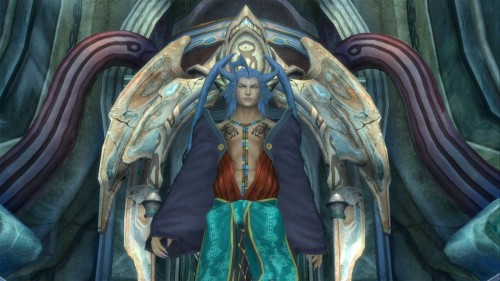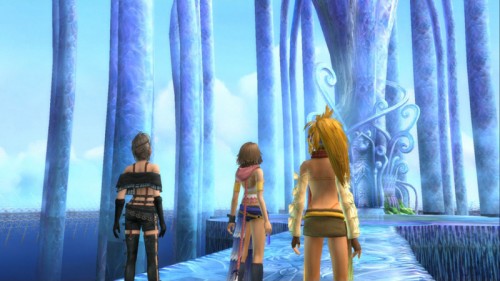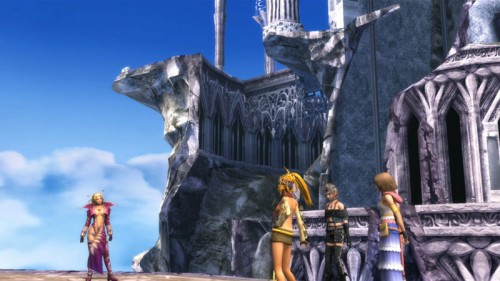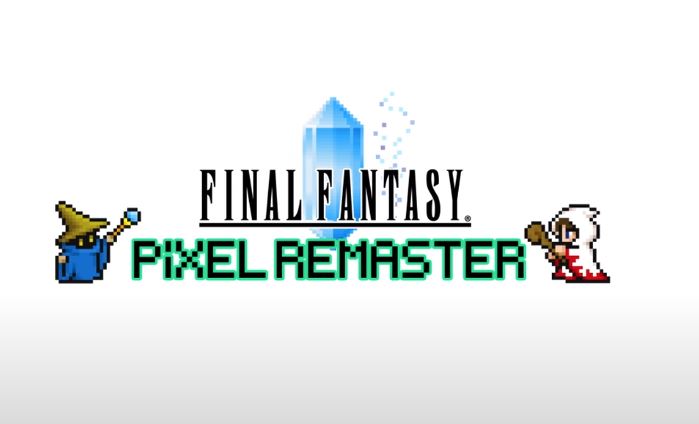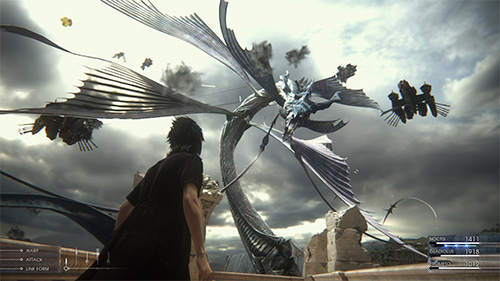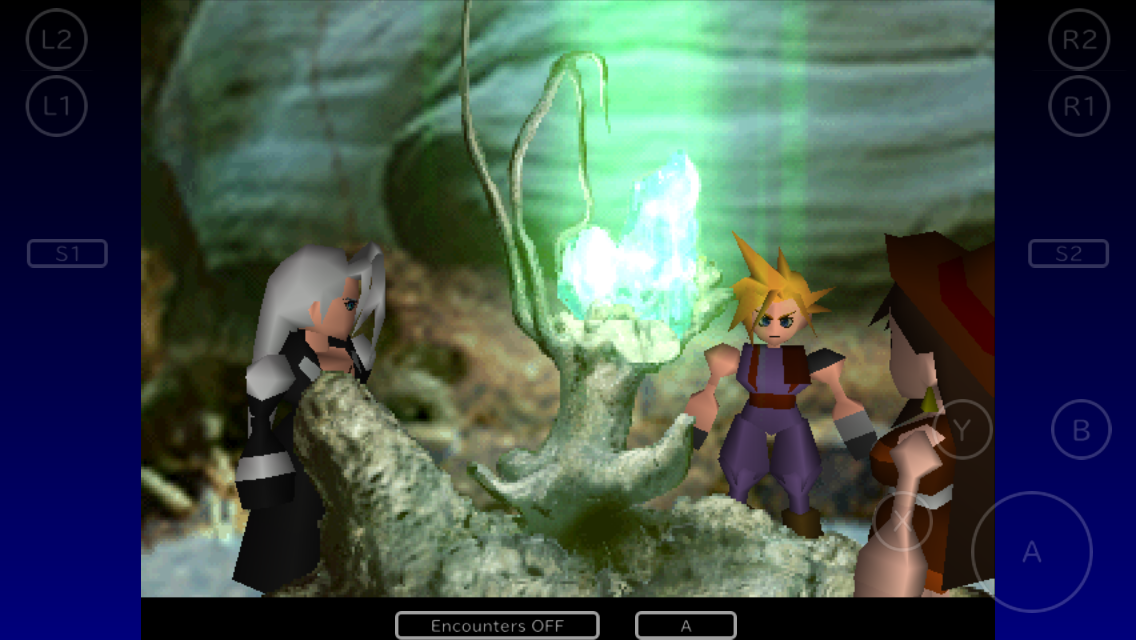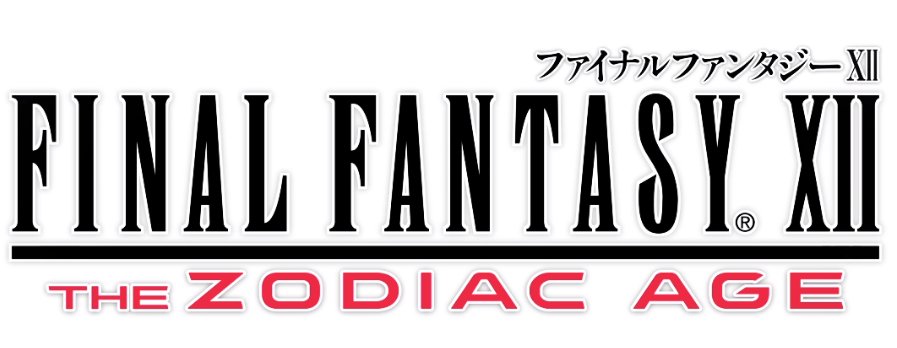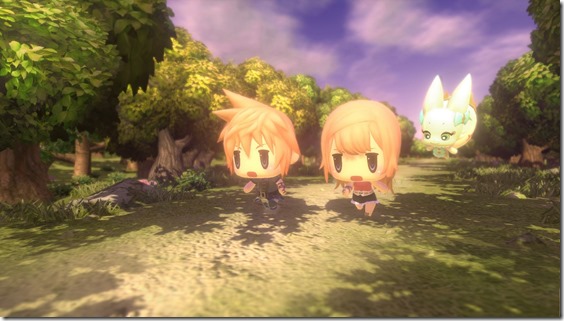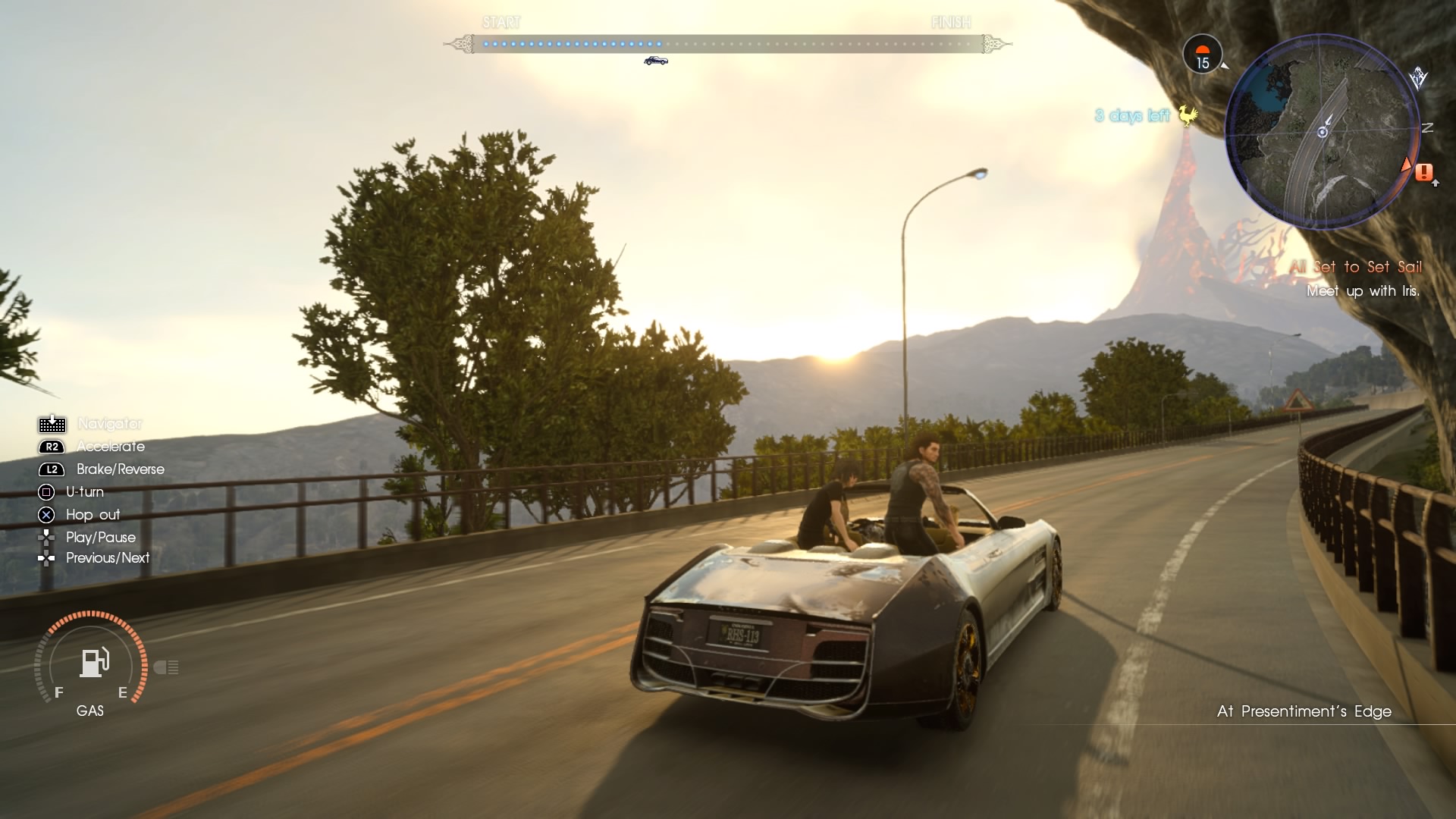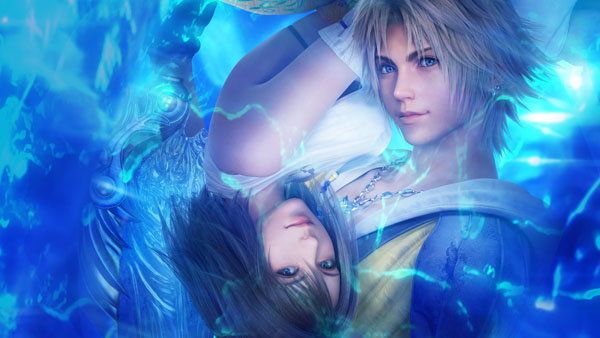
Over the past few years, we’ve seen Square-Enix’s latest entries in the Final Fantasy series begin to diverge from the core gameplay fans had been accustomed to, so much so that a new series, Bravely Default, has been created to deliver that classic experience that the original series can no longer provide. Change isn’t necessarily a bad thing, not when technology and gamers’ tastes are constantly evolving and diversifying, but it’s always interesting to go back and revisit where a series succeeded, or failed, in the past. More than a decade after its original release, Square-Enix have upgraded Final Fantasy X along with its sequel, Final Fantasy X-2, into HD, in a combo-pack for PS3 and PS Vita. They’re some of the most popular entries in the series, so where did they triumph, and what did they get wrong?
After Final Fantasy IX provided a wonderful blending of the series’ elements to that point, FFX sought to advance the series into the modern (the ultra-powerful PS2) era. Fantasy was once again mixed with elements of high technology, while a completely new battle system, progression system and 3D-engine were introduced. The game follows Tidus (although, since you can name him, he is only ever referred to by pronouns) after he is sucked from his existence as a star Blitzball player in the high-tech city of Zanarkand, into the post-apocalyptic, yet surprisingly pleasant, world of Spira – 1,000 years in the future. While he struggles to understand his sudden time displacement, he joins a band of guardians seeking to destroy Spira’s greatest threat, the monstrous cetacean-esque Sin, through the powers of the beautiful summoner, Yuna.
FFX’s battle system is one of my favourite in the series, as it does away with arbitrary time restrictions and focuses solely on strategic play. Still turn based, the ATB gauge which would count down to your turn has been done away with, replaced by a simple list displaying the turn order. You’ve got as much time as you want to choose your commands, and you can even switch party members, weapons and equipment mid-battle too – absolutely unheard of in the series up until that point. Some characters are naturally more effective against armoured enemies, some against airborne, and so on. Summoned monsters replace all party members on the battlefield and stick around as a solitary beefed-up character until they are defeated or dismissed. All of these elements take away the stress of making quick decisions or worrying about enemies demolishing you in combos, and allow you to focus on figuring out their weaknesses, using the environment and developing strategies to defeat them. It’s a departure from the series’ norm, but a welcome one and one of the best parts of the game.
The Sphere Grid is the other really big change from previous games, and its success has led to knock-offs in every subsequent main sequel, from the License Board in FFXII to the Crystarium in FFXIII. It is an appealing system. Where in other FF games, you would level up your characters through experience points, in FFX you gain AP, which raises your Sphere Level. These levels are then spent on the Sphere Grid, a board-game like interface where each level allows you to move a space along it, to access new abilities and stat upgrades. However, you also need spheres themselves to fill these spaces, which come in several different varieties and are largely only available as battle drops. That’s the part I find annoying about the system – you might be able to pick up a Luck Sphere to create a luck upgrade on the grid, but you’ll have to keep grinding battles and searching Spira in the hopes of getting a Fortune Sphere to fill it and activate the upgrade.
Final Fantasy X-2 was intended as a reversal of the serious tone of FFX. In a world free from the threat of Sin, Yuna has joined with friends Rikku and Payne to become ‘sphere hunters’, in a Charlie’s Angels-like group known as ‘Y-R-P’, a subset of the ‘Gullwings’, who in general don’t seem to be any good with names. After discovering a sphere message showing a man bearing a strong resemblance to Tidus, Yuna leads the Gullwings on a quest across the world to reconnect with old friends, enemies and discover an ancient threat.
This all sounds well and good until you start up the game and within minutes, the formerly conservative Yuna is on a stadium stage, singing a poorly translated J-Pop song on top of giant robot Buddha drummer. The developers don’t know how to convincingly transition between the tone of FFX to something lighter, and so a lot of FFX-2’s attempts to be girly, silly and fun just come off as really, really awkward. However, it is still interesting to see a post-FFX Spira, and how characters, governments and the world has reacted to its events. There’s even a handful of moments where the game’s plot manages to really engage, including the ‘1000 Words’ concert that explains key backstory without dialogue, but with images and music, and is the complete opposite of the cringe-inducing opening.
FFX-2 sees the return of the ATB system, which means actions have to be performed quicker, but can also be co-ordinated so the three girls can perform combo attacks by moving simultaneously. Rather than switching out characters mid-battle, you can instead switch their job class whenever you like, using the ‘Dressphere’ system. By finding new Dresspheres, you can unlock new abilities on the ‘Garment Grid’, taking the place of the Sphere Grid. Again, this is a system which many fans adored back in the day, but of the two I find myself preferring FFX’s slower and more considered approach.
The games still look great, especially on the Vita’s OLED screen, as the focus is largely on the colourful and somewhat idyllic lands of Spira, where water is an ever-present feature and the ruins of past civilisations serve as appealing backdrops, overgrown by the environment through the centuries. Rather than simply up-rezzing the original games, textures and maps have been upgraded, and most major character models have been replaced with newer, HD counterparts. The music, too, has been remixed and voices cleaned up, creating a presentation that holds up remarkably well. However, some issues still remain, such as the flat textures minor characters have for faces, and the abundance of camera angles focusing on asses. The quality of cutscene direction and animation isn’t quite up to par with what gamers will be used to these days either, as scenes can be staged awkwardly, for instance, beginning with a dramatic meeting between two rivals and ending with one of them comically instantly sprinting away in a pre-set run cycle.
I also have to bring up Tidus, one of the most unlikeable protagonists in the series’ history. I must admit, on replaying these games he isn’t as insufferable as I remembered him to be, but he’s still pretty annoying. He acts like a spoiled brat for most of his time in FFX, chucking hissy fits and acting ‘too cool4skoolz’ at the drop of a hat. This is punctuated by bizarre moments like the infamous ‘laughing’ scene with Yuna, which apparently was intended to be romantic and not terrifying. Yes, he does mature as the game progresses, and at least he has some personality as opposed to later protagonists, but that doesn’t make you want to punch him in the mouth any less.
In addition to all the upgrades mentioned, both FFX and FFX-2 are presented in their International Editions, with additional content not found in the original releases, including the ‘Eternal Calm’ and ‘Last Mission’ scenarios and a new audio drama ‘Will’, which hints at another potential sequel. Also, if you’re buying the collection on Vita, not only can you expect a more expensive price but you’ll have to download FFX-2 separately, as it is not included on the card. The Vita version does have some limited touch controls for quick-menus too, but these are fairly superfluous.
Both FFX and FFX-2 are great, lengthy RPGs by their own right, and to have them collected in one package with all additional content is more than enough to recommend this edition. With the upgrades in visuals and audio, it’s a must-have for any JRPG or Final Fantasy fan. Your mileage may vary with Tidus, and Square didn’t quite nail down the tone or style in either game, but the gameplay across both remains engaging, the story interesting, and the experience satisfying. Pick it up on PS3 or Vita and have a Blitz.
Great HD upgrade | Interesting world | Great battle and progression system | Tons of content
Tidus | Awkward scenes

